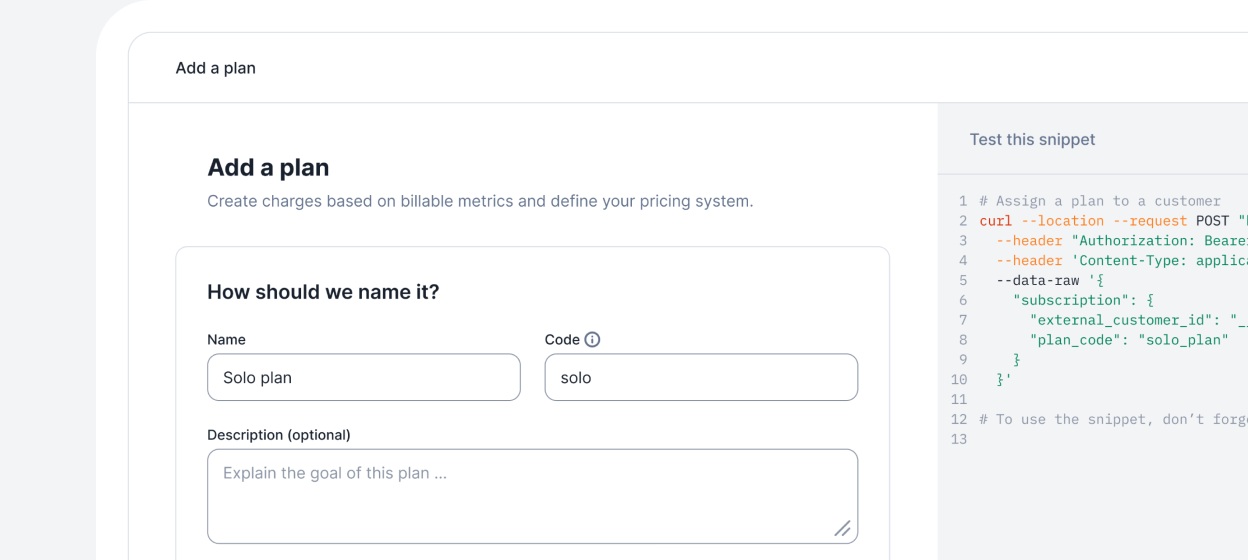Comparison: Stripe Billing vs Maxio for Billing

What is Stripe Billing?
Stripe Billing is one of Stripe’s 21 products (more on that here). It is “recurring billing and subscription management software”, as defined on Stripe's website. It also offers limited usage-based capabilities, such as tiered or package pricing. Stripe Billing is directly connected to Stripe Payments to process payments for created invoices.
.avif)
What is Maxio?
Maxio, formerly Chargify and SaaSOptics, is a Billing and Financial Operations platform. Chargify specialized in billing and subscription management for SaaS companies, while SaaSOptics focused on revenue management. In April 2022, they merged to create Maxio, offering comprehensive solutions for SaaS businesses.
.avif)
Stripe Billing vs Maxio: Feature comparison
Subscription billing
Stripe Billing and Maxio provide flexible subscription billing options, including fixed fees, tiered pricing, volume-based billing, along with dunning management and refund support. Businesses can set up recurring billing cycles, manage billing exceptions, and handle proration and discounts all within their platform.
Usage-based billing
Stripe Billing is not designed for usage-based billing, and requires you to pre-aggregate usage-based events into proper units before sending data to its billing system.
Maxio can effectively handle standard subscription pricing like Netflix and basic usage-based pricing like Twilio's per-message rates. However, when it comes to complex usage-based billing scenarios like PayPal's per-transaction pricing with a percentage and fixed fee, plus minimum and maximum limits, neither of these softwares can provide support.
API Rate limit
Stripe Billing's rate limit for usage ingestion is 100 requests per second, which can be a hard limitation for Cloud, API, Fintech, or AI companies (and lots of other verticals) that are recording heavy usage.
Maxio manages call limits based on concurrency instead of the usual rate limits per second. It allows a maximum of 4 concurrent API calls per subdomain at a time, not limited to 4 requests per second. If the concurrency exceeds 4, additional requests may be queued for processing once the concurrency returns to acceptable levels.
Invoicing
Stripe Billing does not include Invoicing in its feature set. You need to pay additional costs to use Stripe Invoicing’s system.
Maxio offers advanced features for invoicing operations including Invoice customization, Custom fields and Credit notes.
Taxation
Stripe Billing does not include Invoicing in its feature set. You need to pay additional costs to use Stripe Invoicing’s system.
Maxio offers advanced features for invoicing operations including Invoice customization, Custom fields and Credit notes.
Payment gateways
Choosing to use Stripe Billing means you are exclusively tied to a single payment processor… called “Stripe Payments”. You will not be able to use other payment processors than Stripe to collect payments for the invoices your companies will issue. While Stripe is a widely-used payment processor, Stripe may not support every product and may not be available in all countries. Notably, in countries such as India, Stripe Payments is not widely adopted.
Maxio has integrations with 22 payment gateways including Stripe Payments (details here).
Stripe Billing vs Maxio: Pricing
Stripe Billing will cost you 0.5% (and up to 0.8%) of your transaction volume, on top of Stripe Payments (starts at 2.9% + $0.30 per successful card charge). With Stripe’s vendor lock-in, you might stack dozens of fees that will directly impact your revenue. Once again, Stripe has 21 products and each of them has its own pricing.
Maxio’s pricing does not include a free trial, starting with the Essentials Plan at $599 per month, $1 million in annual billings included. However, the overage charge of approximately 0.9% of revenue could potentially add up significantly for high-volume users. For the Growth and Scales plans, pricing is upon request. According to the Fififinance’s review, Maxio’s 0.9% plans include a fixed fee and overage charge on revenue.
Which solution is the best for you?
Stripe primarily focuses on Payment processing and with additional services for Billing, Invoicing, and Taxation incurring separate costs alongside Stripe Payments’ fee. Maxio offers a more comprehensive billing solution that encompasses a wider range of billing-related features and capabilities. Stripe Billing and Maxio cater to subscription and recurring billing. However, these softwares may not be flexible enough for handling complex pricing models and usage-based billing. In such instances, it's worth exploring alternatives that better accommodate intricate billing scenarios.
Lago, the Stripe Billing and Maxio alternative
Lago is an Open Source metering and usage-based billing solution. It offers a self-hosted and cloud-based, scalable, and modular architecture to manage subscriptions, usage-based billing and all the nuances in between. It's the go-to choice for companies that require a powerful tool to handle complex billing scenarios, allowing you to build a comprehensive billing system from scratch with ease.
For further information and detailed comparisons:
👉 Stripe Billing vs. Lago comparison: here
👉 Maxio vs. Lago comparison: here
TL;DR: Table of comparison Stripe Billing vs. Maxio
- Paid plans start at $599/month with $1M in annual billings, overage charge at 0.9%. Higher plans come with custom pricing.
Focus on building, not billing
Whether you choose premium or host the open-source version, you'll never worry about billing again.
Lago Premium
The optimal solution for teams with control and flexibility.

Lago Open Source
The optimal solution for small projects.

